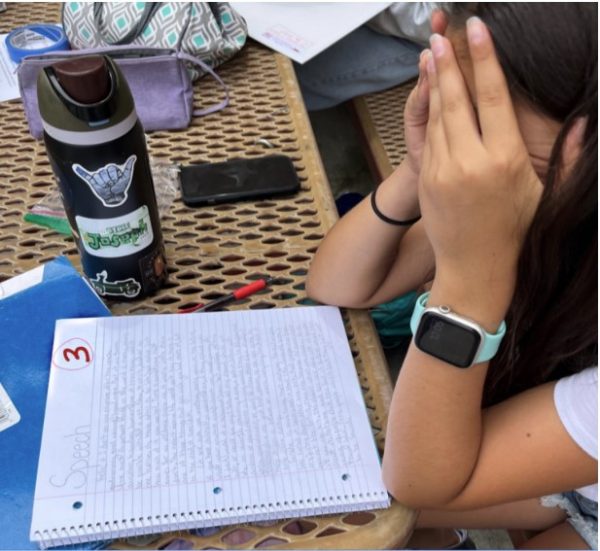Staff Editorial: Exploring Activism as Teenagers
Although social media activism can be effective, it is important for students to use other methods as well
Social media activism does not provide context for all issues.
Social media is a great communication tool to share ideas. However, in recent years more people have been using these platforms for performative activism. According to an article from the Yale Daily News, this type of activism is for the purpose of social clout instead of supporting social movements. Navigating the news on social media can be difficult, which is why teenagers must learn how to research issues and take information on social media with a grain of salt.
Although social media is a great way for teenagers and young people to express their thoughts and raise awareness about issues in the world, many people share posts without knowing their political correctness.
According to Vox, “In 2019, 8% of engagement with the 100 top-performing news sources on social media was dubious. In 2020, that number more than doubled to 17 percent.”
People resort to social media for news because it can be easily accessed. With a few swipes on Instagram or Facebook, people can share and access information within seconds, even if it may not be true.
“I view social media advocacy as a means to use social networks in order to help [share] your [beliefs],” junior Marcus Chang said.
It is important to fact check the news we get on social media because it can be misleading or biased. People can fact check by making sure the source is up to date, addresses all sides of issues and by viewing a wide variety of sources. If students feel passionate about an issue, they should actively seek change which does not always happen over social media.
In order for students to voice their opinions about rules and policies at school, they should understand advocacy. Considerably, self-advocacy defines an individual’s capability to effectively communicate, convey, or intervene his or her needs and interests. On the other hand, system advocacy is about changing school policies and regulations that perhaps impact how someone lives their life.
“Now is the perfect time for youth to create great change,” Marie-Lucienne N’Guessan, a young advocate for education at UNICEF said.
High school students’ opinions can give enormous help to create changes in their future education and for others who will become an influence for the next development. To help oneself and each other individually is to voice and advocate. For the best results to happen, students from Woodbridge High should express their opinions for future development in the school environment. An example is to voice complaints, hardships that are showing occurrences at school lunch or break time, classroom inequities between peers, or simply helping a student by asking for guidance from teachers in our school.
In order to advocate for issues in school, students must be able to determine for themselves what they deem important. Using online sources such as ad fontes media, a media bias chart that provides readers with an understanding on the bias different news outlets have. Students can determine which news outlets support specific beliefs and values and which are also unbiased in portraying current events.
News outlets located farther up and in the center are seen as being the most unbiased, while moving left and right lean towards different political ideologies. It is important to learn how to research using credible sources because the information can help when trying to advocate for any topic and understanding diverse views.
When reading information gathered from social media, it becomes crucial to fact check whether what you are reading or hearing is true and not biased. By using credible sources, it allows the listener or reader to gain information that they can be sure is true and factual. Presenting information gathered from media outlets and students and staff on campus to school administrators is a great way to solve issues at school. Additionally, creating petitions can help raise awareness to those that are unfamiliar with the topic. The more people who understand and know what is going on, the better chance that the issue will be heard and hopefully resolved.
Advocating can be challenging, but if we come together as a Woodbridge community, then we can help resolve social issues such as racism, homophobia, cultural appropriation and sexual harassment.
Your donation will support the student journalists of Woodbridge High School. Your contribution will allow us to purchase equipment and cover our annual website hosting costs.

Hey Warriors! My name is Jessie King and I'm excited to be an illustrator for Golden Arrow this year. This will be my first year on the Golden Arrow. I...







